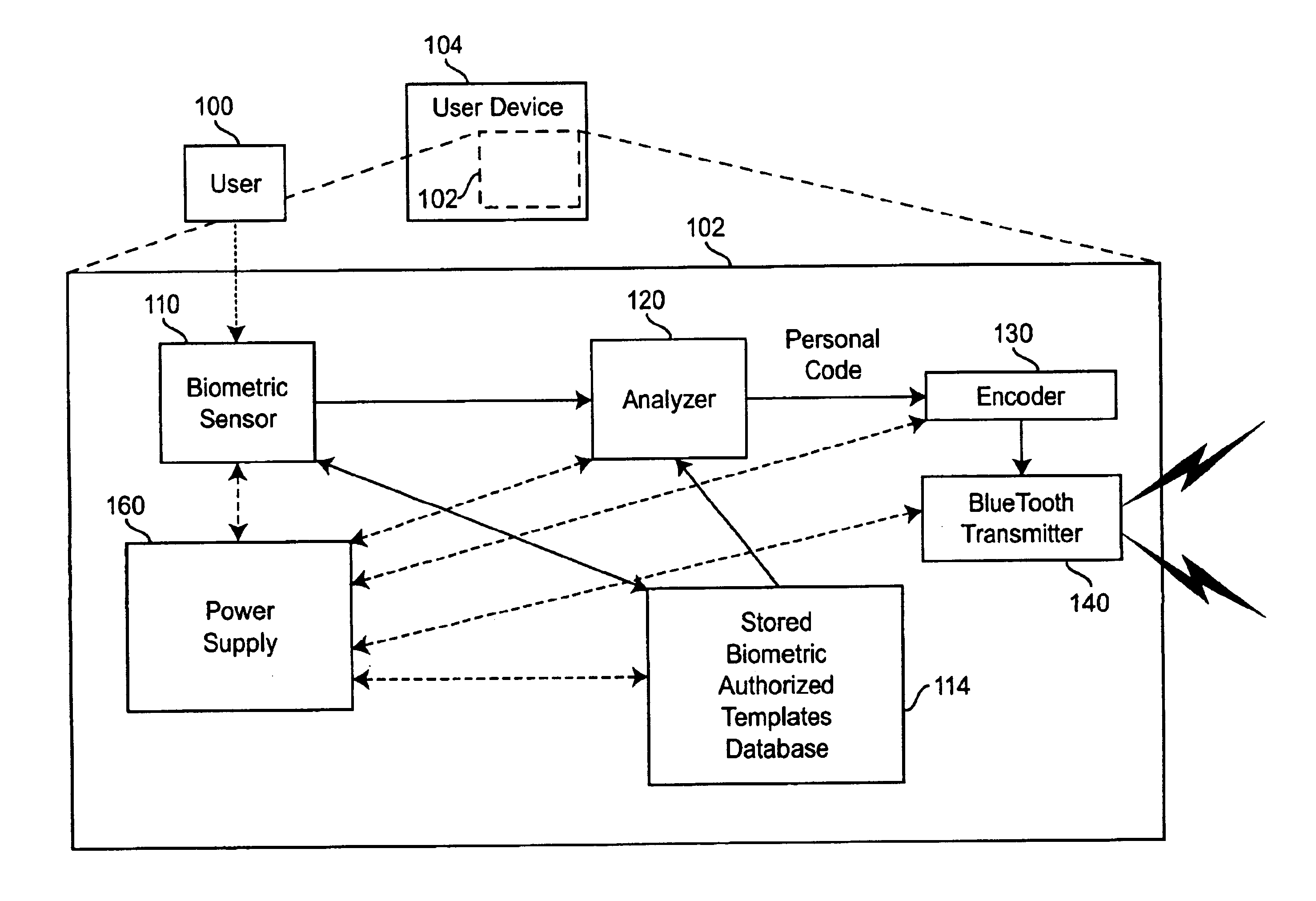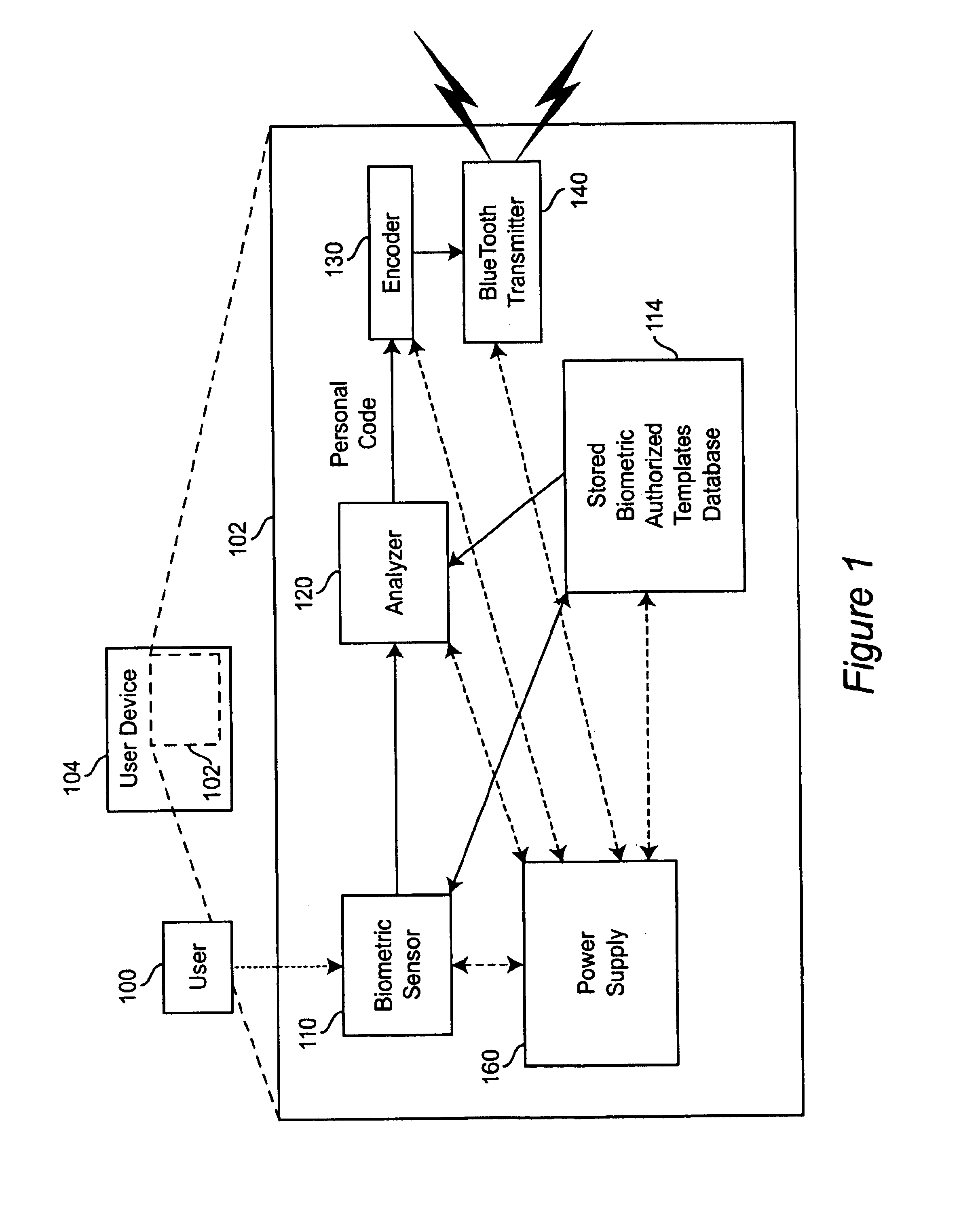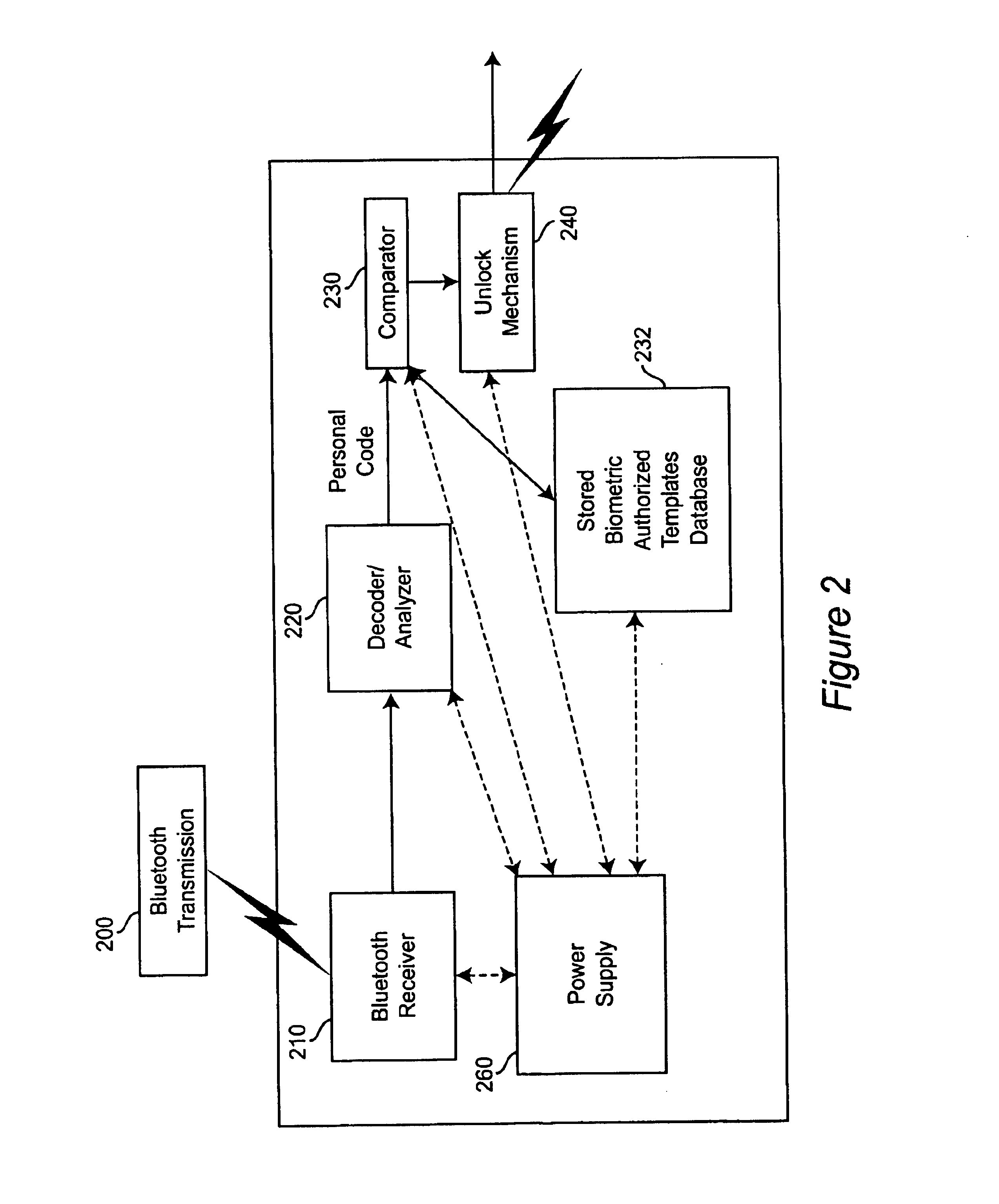Personal biometric key
a biometric key and key technology, applied in the field of personal biometric keys, can solve the problems of confusing many segments of the population, biometrics are expensive to buy, install and maintain, and may not work for all persons, and achieve the effect of saving costs and slightly different sensitivity
- Summary
- Abstract
- Description
- Claims
- Application Information
AI Technical Summary
Benefits of technology
Problems solved by technology
Method used
Image
Examples
Embodiment Construction
While other inventions address the use of various and multiple biometric sensors, and other inventions address the use of a portable RF device for transmitting a private code, no previous invention presents the points of novelty of the current invention. The proposed method and apparatus allows a person to select one or more personal biometric methods and to be personally responsible for the maintenance of the sensor and its availability when and where he wishes to use it. He can select a technique which offers very high accuracy and convenience with an expected high level of security, for which he pays more. Alternately, he can select a very simple method which offers less uniqueness and perhaps requires a longer identification time, but which is cheaper.
The person can also change his personal biometric sensor when he wishes to do so. For example, when a person graduates from school and gets a job, he may need and be able to afford an upgraded system. He would submit his new biomet...
PUM
 Login to View More
Login to View More Abstract
Description
Claims
Application Information
 Login to View More
Login to View More - R&D
- Intellectual Property
- Life Sciences
- Materials
- Tech Scout
- Unparalleled Data Quality
- Higher Quality Content
- 60% Fewer Hallucinations
Browse by: Latest US Patents, China's latest patents, Technical Efficacy Thesaurus, Application Domain, Technology Topic, Popular Technical Reports.
© 2025 PatSnap. All rights reserved.Legal|Privacy policy|Modern Slavery Act Transparency Statement|Sitemap|About US| Contact US: help@patsnap.com



